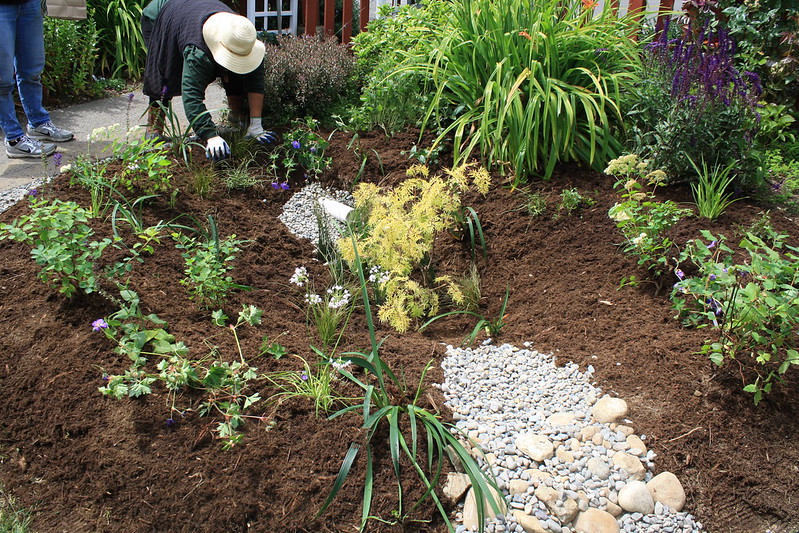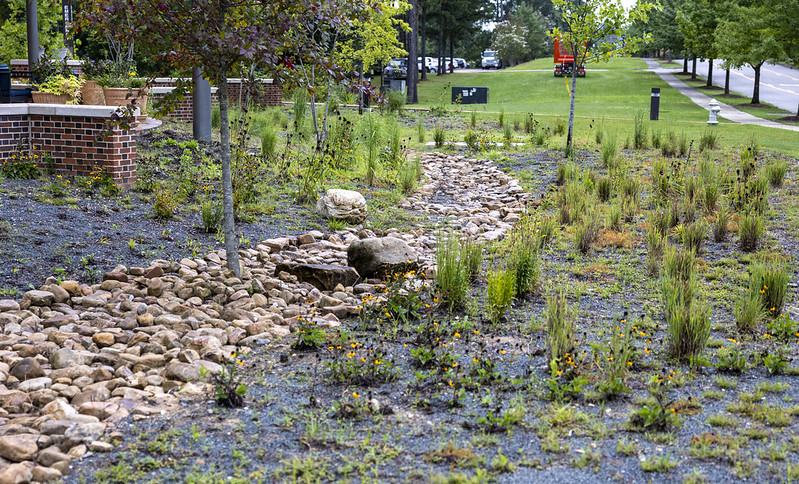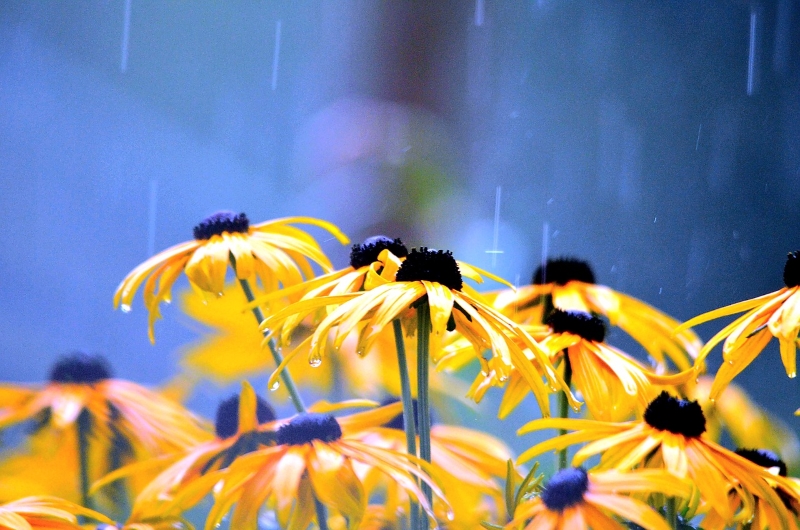By Dennis Patton, Johnson County K-State Research and Extension
Reusable bag or plastic bag? Rain garden or bioswale? The answer may be obvious on the first choice, but when it comes to managing water, it can be confusing.
Rain gardens and bioswales have similar results, but vary in how they are designed and work. Let’s look at what might be best for your situation.
Both a rain garden and bioswale retain or slow the movement of water from the property, decreasing stormwater runoff. Water leaving your property carries particles of soil and organic debris with it. Phosphates, nitrates and other chemicals transported after a rainstorm affect the quality of water in your watershed. Compromised water quality is what leads to algae blooms and is harmful to wildlife.
Rain gardens and bioswales slow the movement allowing it to soak into the soil and reduce flash flooding issues. Knowing which design is best for your property is the first step.
Rain Gardens
Rain gardens are a depression in the soil, collecting runoff from rooftops and driveways. They can catch up to the first inch of rain, allowing it to soak into the ground. When properly constructed, rain gardens should drain and not have standing water within 24 to 48 hours of the rain event. Soaking into the soil quickly reduces issues with mosquitoes.
Rain gardens should not be placed in poorly drained locations as added water compounds the problem. Construct it 10 to 15 feet away from the home to prevent foundation issues with the additional moisture. Plants should include a mixture of native grasses and perennials having deep, fibrous roots to break up the soil and aid in water movement. As a side benefit, this mix of plants will serve as a habitat for pollinators and birds.

Rain gardens are gardens planted with a small depression to collect water. Photo by City of Burien.
Bioswales
Bioswales are depressions or channels collecting the rainwater runoff. As the water moves through the channel, the mixture of native plants slows the movement and increases infiltration to remove pollutants. Unlike a rain garden, the filtered water leaves the bioswale instead of collecting it. Bioswales can be used in combination with a rain garden. The swale moves the water to the rain garden to thoroughly soak into the soil.
In my experience assisting people with drainage issues through the Johnson County Extension, bioswales may be the best option. Many people deal with poorly drained or eroding soils from water movement. A properly constructed swale will channel water, slow the movement, and provide environmental benefits. Here our goal is not to trap additional water on the property with a rain garden.
Whether a rain garden or bioswale is right for you, our goal should always be to slow the movement of water from your property to help keep our most precious natural resource clean.

Bioswales move water along a channel to filter water, instead of collecting it. Photo by Alabama Extension.
About Johnson County K-State Research and Extension
Located in Olathe, Kansas, the Johnson County Extension Office is the cooperative extension service of Kansas State University providing research-based information and technical knowledge through educational programs and events including the Johnson County Master Gardener program and this year’s International Master Gardener Conference, June 18-22.
On June 17 and 18, it is hosting the Tour of Private Gardens featuring six private gardens in the Kansas City metro. Wander through urban, suburban, and acreage gardens for inspiration for your own yard between 9 a.m. – 4 p.m. Tickets cost $45.
Contain the Rain Program
Residents of Johnson County, KS can receive up to a 50-percent refund for the installation of rain gardens, rain barrels and native plants through a Contain the Rain program.
Photo Credit: Rain Garden photo by City of Burien | CC 2.0 & Bioswale photo by Alabama Extension | CC 1.0
